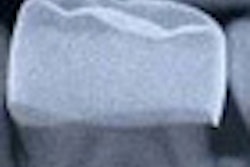Sealing caries in primary molars using the Hall technique "significantly outperformed" standard restorations in the long term, according to a new study in the Journal of Dental Research (September 15, 2011).
The Hall technique is a somewhat controversial method for managing carious primary molars, noted the study authors from the University of Dundee. With the Hall technique, practitioners use glass ionomer cement to bond a metal crown directly onto a primary molar without removing caries or using any anesthesia. The technique was pioneered by Norna Hall, BDS, a dentist working in a remote, rural part of Scotland where children had a high incidence of caries and families were reluctant to seek treatment.
In this five-year study, the researchers compared Hall technique clinical/radiographic failure rates with general dental practitioners' (GDPs) standard (control) restorations. They conducted a split-mouth, randomized control trial of 132 children, ages 3 to 10 years, and 17 GDPs in Scotland.
There were 264 study teeth with initial lesions, 42% of which were radiographically more than halfway into dentin and 67% of which had class II restorations.
Annual clinical/radiographic follow-up data were recorded, and 91 patients (69%) had a minimum follow-up of 48 months. At 60 months, major failures (irreversible pulpitis, loss of vitality, abscess, or unrestorable tooth) were recorded: Hall technique, 3 (3%); control restorations, 15 (16.5%) (p = 0.000488). At 60 months, minor failures (reversible pulpitis, restoration loss/wear/fracture; or secondary caries) were Hall technique, 4 (5%); control restorations, 38 (42%) (p < 0.000001).
"Sealing in caries by the Hall technique statistically, and clinically, significantly outperformed GDPs' standard restorations in the long term," the researchers concluded.



















